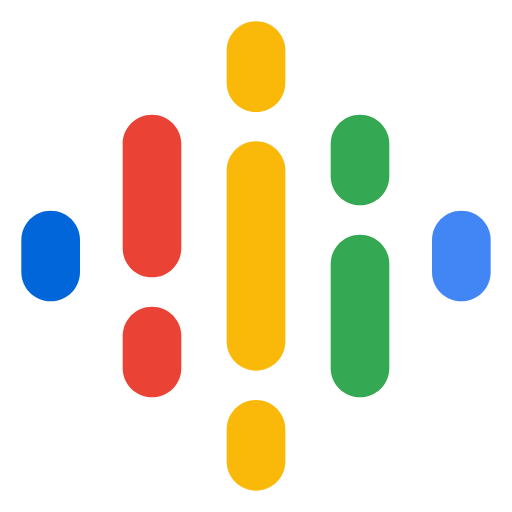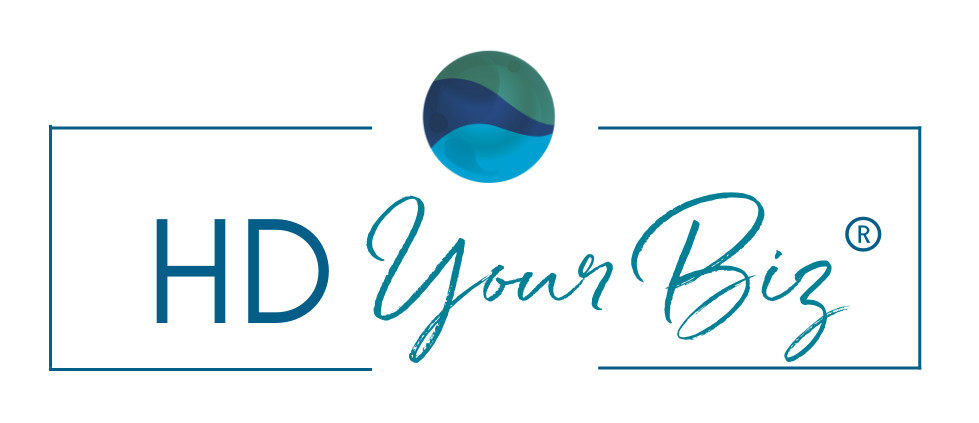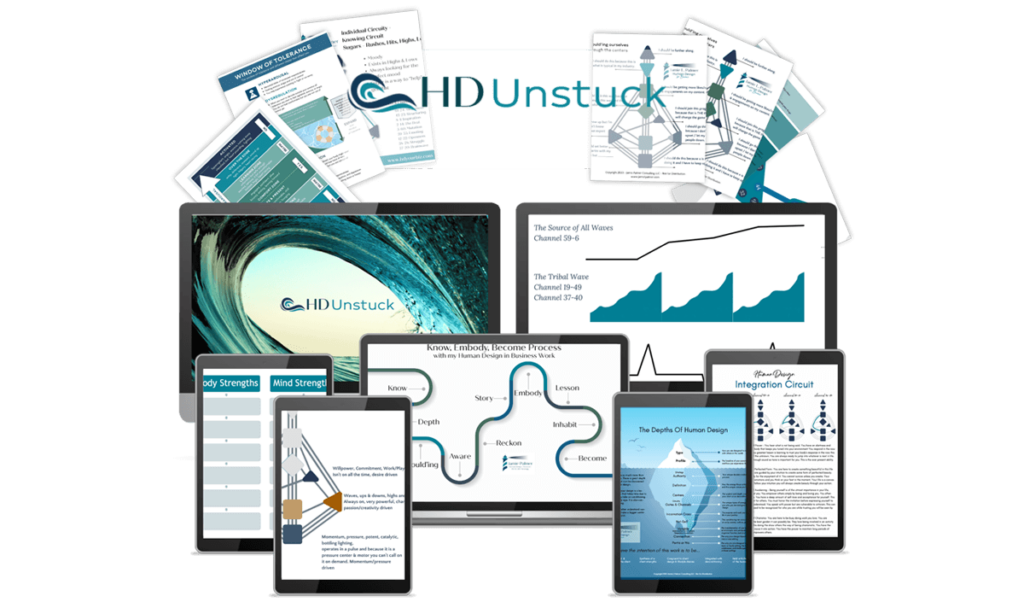The Projeciton Field in Human Design – Line 2 and Line 5 Profiles
In this episode of the HD Biz Podcast, Jamie Palmer discusses the concept of the projection field in human design. She explains that the projection field in human design is often misunderstood and delves into its mechanics, particularly how it operates in a second line versus a fifth line. Palmer explains that the six lines in human design make up the 12 profiles, each with its own unique characteristics and roles. She emphasizes that second lines should only answer projections from those in their inner circle, as answering projections from outsiders can lead to depletion. For fifth lines, Palmer explains that they are often not seen for who they truly are, but rather for how they can benefit others. She advises fifth lines to be willing to put their reputation on the line for what they believe in. Palmer concludes by inviting listeners to join her in a six-hour audio course where she dives deeper into these concepts.
00:00 Welcome to HD Your Biz Podcast, discussing projection field.
06:17 Trusted second line answers inner circle projections.
09:52 Understanding 2nd Line Projection in Human Design fdynamics: depletion and nourishment.
13:18 I Ching, Chinese medicine influence on human design.
17:21 Maintain authenticity and boundaries for peace.
19:02 Understanding the 5th line Projection Field in Human Design
22:51 Disruptive 5th line seeks to be attractive.
27:03 Understanding projection, setting boundaries, and embracing self-awareness.
28:15 Energy dynamics explained, 6-hour audio course available.
Join The Line Experience
Join the HD Wild Open House to learn more about the program => https://learn.jamielpalmer.com/courses/hd-wild-open-house
Order the Book => https://hdbizbook.com
Transcription of the Human Design Projection below:
(00:02):
Hello and welcome to the HD Biz Podcast. Today we are talking about the projection field. So one of the things that I think is commonly misunderstood in human design is really how the mechanics of the projection field work. What is it? What does it mean? How does it operate in a second line versus a fifth line? How is it impacting you as the person projecting on somebody else? And so today I’m going to really dive into those mechanics. But before I dive in, I just want to explain that when we talk about the lines in human design, and there are six lines that make up the hexagram. They go one through six. The six lines make up the 12 profiles. And oftentimes you probably heard the metaphor, or maybe you haven’t, but we talk about this in the HD Wild program that the first line is the foundation.
(01:06):
The second line is the first floor or the window on the first floor of the house. The third line is the stairs between the first floor and the second floor. The fourth line is the foundation of the second floor. The fifth line is the window on the second floor or the attic window, and then the sixth line is the roof. That’s where the saying being on the roof comes from the sixth line. And so we have to understand that that first line is here to establish a foundation. The two shows us what’s possible with that foundation. The three experiments with it and pokes holes in it. The fourth line externalizes it and the fifth line goes and disrupts it and says, Hey, this isn’t going to work for everybody. Here’s how we can do it better. And then the sixth line says, you know what?
(02:00):
I think there has to be something more here. There’s an objective way to do this. Let me be of counsel. Let me test my other word lead in the sixth line. But we have to understand that it goes 1, 2, 3, 4, 5, 6, and then the cycle starts again and the lines are harmonious. The first and the fourth line have foundational themes. The second and the fifth line are both projected. They’re showing possibilities. The third and the sixth are testing, experimenting. Well, the sixth line doesn’t really experiment, but it’s like showing us there’s more here. And so they share themes. And when I teach profiles, we spend 12 weeks on profiles. So we spend an entire semester going through the profiles. And the reality is what I’m going to teach and talk about today is really going to distill this down. But one of my students asked me the other day, what’s the difference between the second Line projection field and the fifth line projection field?
(03:01):
So I’m going to explain that and I’m also going to explain how it might be impacting you if you are not a second or a fifth line. If you are sitting there and you’re projecting on somebody, vice versa if you are somebody that’s being projected on. So we have to understand that that second line sits on the first floor of the house and we can see into the house, we can see into the first floor of a house. Whereas that second floor window, we can’t really see that. And I always think of Beetlejuice comes to mind, it’s going to date my age, but I used to watch that show as a kid, and the two main characters in Beetlejuice would sit in the second floor window and the teenage daughter would look and be like, I see people up there. And there was an air of mystery about it.
(03:50):
And that’s really how the fifth line projection field operates. So we have to understand that the profiles impacted by this are the 2 4, 2 5, 5 2 6 2 for the second line. And then for the fifth line, it’s the two five, the three five, the five one, and the five two. I’m not going to get into the difference of say a two five versus a five two today. That is not what the intention of this is. I’m just going to explain how the projection field works. So we have to understand that if you live in the projection field in general, you are not seen necessarily for the whole of who you are. You are seen for how you can benefit the other person. And so oftentimes we have to understand, particularly with a projected line like the two or the five, these are people who are have or have an air of uncertainty around other people, almost inherently, right?
(05:00):
Second line children are often told, oh, you’re so talented at this. Go do this thing. And it ultimately doesn’t end up working out for them. I always like to think of my two four son and one year we had him play soccer, and I’m like, you’re so good at soccer, you should play at soccer. And in hindsight, it was me projecting on him. And the funny thing is that most of the season he convinced his coach just to sit on the sidelines because he wasn’t actually interested in playing soccer. He just wanted to chill. That was not what he wanted to do. And we have to understand that when it comes to that second line projection. Second lines have to actually answer projections that help them feel nourished. So themes that I like to use for this are what helps you feel nourished versus what helps you feel depleted.
(05:53):
And we have to understand that that second line, When they get projected on or recognized for something that they are naturally talented about, they want to make sure that they’re answering that projection or that call from somebody in their inner circle, from somebody that’s a friend, somebody that they’ve let into their world. If you’re in a second lines world, that means that you are trusted. And the second line in general is only ever here to answer projections from those in its inner circle. And when it answers projections from those who are outside of its inner circle, it will often feel depleted because we have to remember the second line is not here to necessarily explain their process. They are here to simply show up, allow us to witness them, and as a result, we are transformed. And so when we think about this dichotomy, and I’m sure the second lines that are listening in their headphones are like, oh my God, I would guarantee that they can think of a time when they answered a projection from somebody else.
(07:13):
Because what happens is I always like to imagine every second line has this almost force bubble around them or they live in this snow globe. The environment is super important for a second line. And what happens is, is that somebody will come in and they’ll look at that second line and like, oh my goodness, you’re so talented at X. And mind you, the second line’s like, okay, they’re never really ever sure that they’re actually talented or know the things that they know. They can’t often explain how they know the things that they know. And ultimately the second line’s democratic, it’s happy to just introvert away in its own little bubble. And so when a second line gets projected on by somebody who isn’t in that inner circle of theirs who isn’t a trusted advisor, essentially, oftentimes they’ll become incredibly depleted by said projection because the projections more about the other person and how that second line can help that person.
(08:29):
Then what the second line is actually interested in doing, and second lines, they will nurture and cultivate their talents. They will develop those things that they are naturally talented at, but they have to choose to do it because second lines aren’t necessarily motivated in the traditional sense of the word. And ultimately what happens, they become incredibly depleted and then they don’t necessarily feel safe to step out into that projection field when they’ve answered the wrong projections. And so that is one of the key things to understand for those second lines. They’re not here to answer every projection. So strategy and authority obviously become very important here. And who’s actually giving me this projection? Who’s projecting on me and what are they projecting that I am good at? And I always like to think about this is when a second line gets projected on, especially by say a stranger or someone who isn’t in their trusted circle, it’s almost like their snow globe gets shaken.
(09:39):
Their whole world can get rattled, especially once they’ve answered the wrong projection. And so understanding this dynamic, I have found to be incredibly helpful for those who are second lines. And we have to understand even when a second line answers the correct projection at the beginning, when they step out into that projection field, they may feel the start a little bit depleted, but then as soon as they feel a little bit depleted, there should be this valley of depletion. And then ultimately there should be nourishment that comes from it. But we have to remember neither of there are exceptions to this. So caveat, caveat, caveat, but for the most part, projected profiles, particularly second lines, are not here to stay out in the projection field for extended periods of time. When we force a second line to stay on, they’ll have this valley of depletion and then they’ll become incredibly nourished.
(10:45):
And then what will happen is they’ll have this peak level of nourishment and then it’ll start to dip again to go to this place of depletion. And ultimately they go into their hermiting mode or their introvert mode before it starts to deplete again. And then they go, they do their own thing. They cultivate, cultivate, cultivate their talents. They just mine their own stuff, mine their own way of doing things. And then another projection will come along later on. And so that’s how the second line projection field operates. And we have to remember if we are projecting on a second line, it’s often because we see that they can help us in some way. They can render us better off in some way. And so projections for the second line are about how the talent that they have and how it can help me. Now, that’s not necessarily a bad thing for the other, but we have to understand that if that second line says no, particularly if we’re not a second line and we’re projecting on a second line that it’s not personal, it’s that it will literally deplete their life force energy when they answer the wrong projections.
(12:05):
So it’s important just to keep that in mind when you think about that dynamic that is playing out. Because I see so many second lines, especially in the online space, they’re tending to jump from thing to thing to thing, and they’re constantly in this state of depletion. And the reality is second lines aren’t really here to be on and be with the people all the time. They’re here to come out. I feel like if I had to think of what is the ideal career for a second line, it’s like speaking, go out, speak, write a book, go out and speak, and Oprah’s a good example of a two four generator. So she’s projected profile, and you think about her show, she would go out, do her thing on stage, and then go back and fill up her nourishment tank again. And so that’s how that second line projection field operates. Now let’s talk about the fifth line projection field. So the fifth projection field is a bit trickier to navigate. And in traditional human design, this is the heretic, right?
(13:21):
And that isn’t a great name, so I like to call it the disruptor. But we have to remember through the hexagram that so much of what human design is based upon comes from the itching and traditional Chinese medicine and all of these eastern modalities that have been around for a long period of time through the lens of the hexagram. The fifth line was known as the general. And the general in ancient times came in when the king or the queen lost control of the city and they were here to restore order to chaos. And so when we think about this fifth line, this disruptor, I think it’s important to understand that for fifth lines, we have to understand that most people never really see a fifth line for who they are. You’ll see a second line for who they are, but you’ll also see what they can do for you.
(14:35):
You can see the possibilities of things that they can benefit for you. When it comes to the fifth line, we have to understand that the fifth line is the highest universalizing power that a human can be. It’s orally and energetically. The fifth line is the highest aura that a human can be, right? The sixth line is superhuman. It’s beyond human. And we have to remember the fact that one, we don’t see fifth lines for who they are on that second story, there’s this air of mystery and we’re like, there you are up there selfishly hoarding all this information. And I can see my potential in you. I can see all of this goodness, and ultimately you are not letting me have it right? I always like to use the example. I’m a three five. I always like to use the example. There’s so many people that are just like, oh, I just want to sit and hang out with you.
(15:49):
I love being in your aura. That happens a lot to me locally here. And I always like to say people love to bask in the aura of a fifth line because it helps them feel good about themselves at first, but eventually a second projection comes along. And for most fifth lines, second and third projections don’t always tend to be so positive, especially if they’ve answered the wrong projection, but even more so in a five one, A five one, their first projection is almost always positive, even when they follow their strategy and authority or not. The second projection for five ones is almost never positive, regardless. Regardless if they follow their strategy and authority. A great example of this is Taylor Swift, right? There was a period of time where everybody loved her when she first became popular with shake it off, and then immediately after that everybody hated her, right?
(16:57):
Positive first projection, negative second projection. So we have to understand certain profiles, and I’m not going to get into this in this today. I am going to be doing a line experience workshop, audio experience in the near future that if you want to dive more into that, you can check that out. The thing to remember is though that fifth lines we’re not here to be on all the time. And so we also have to understand that for fifth lines, because we’re not ever necessarily seen for who we are When we get projected and on and we’ve repeated it ourselves multiple times and we aren’t seen, it can often make us feel like crazy people. And I’ve had this happen to me in my business where I’ve hired somebody and I’ve said, here’s my expectations. Here’s the contract, here’s all the written stuff are dotted T’s are crossed, everything, everything.
(18:06):
And then the person will come in and then they’ll just be like this runaway train of whatever it is that they want to do. And I’m like, look, man, that’s not what we agreed upon. And they’re like, yeah, well, and that’s their projection on me. I mean, I’ve even had people, I recently had a review on Amazon that came in that projected on me that I was a man and the whole review was about through the lens of me basically being a man. And the reality is we have to remember fifth lines don’t get seen for who they are, which is why you often hear the term burnt at the stake when it comes to fifth lines. And the burning at the stake is because this is a person who is going to disrupt the way that things have always been done. They see things differently.
(19:04):
They are here to come in when every other way of doing things has failed and to show us a new way. And so I always say for fifth lines, who get projected upon, we really have to be willing to be burned at the stake. But more so I think of this as identifying with the work of who we are. It has to be part of our being. It has to be part of our identity, the things that we are willing to get burned at the stake for or a fall from grace for. Because oftentimes what happens is people project on a fifth line that they’re going to be able to come in and they’re going to be able to save the day. And I mean, this happened to me in my agency a lot where people would hire me almost as a last ditch effort to try to save their company with social media.
(20:01):
And the reality is social media doesn’t necessarily do the selling. It’s your sales page. And so people would come in and they would have this expectation that I’d be able to get these immediate results. And even if I would say it over and over again in my contract and the onboarding and the sales call and all these places, ultimately people would end up angry. There was this one woman in particular who just so much projection in hindsight. And the reality is that’s also part of the plight of the fifth line. Essentially, we have to be willing to put our reputation online or on the line for the thing that we are stepping out into the projection field for. And fundamentally, that is challenging because it feels good when somebody’s like, oh, can you come save the day for me on this? I have a client, she’s a launch strategist, and she did this wonderful launch for a client.
(21:18):
I think she’s a three five projector, and she did this wonderful launch for this client. They had a pretty successful launch, and part of that launch strategy was using this whole clickup system and the client projected on her, oh, you’re so good at, you’re a clickup expert. Can you come help me set up this whole clickup system in my business for all these things? And I don’t think it was a proper invitation. She was a projector. So caveat there, but the reality is this person projected on her that she can save the day with this lady’s systems. And ultimately the entire thing fell apart because of the fact that that was not something she was willing to be burnt at the stake for. It wasn’t something she identified with. And I remember her speaking about this when this all happened, and she was like, well, I guess I’m a clickup expert now.
(22:12):
And I’m like, are you sure? And I think that projector self of her ultimately pulled her into it. It felt good to get that recognition, but it was not true recognition. And I always think that’s a good example of how to understand part of how that projection field works. And so we have to understand that most people are projecting their highest possibility onto the fifth line. That is why the fifth line has to identify with the thing that they are doing. They have to almost over communicate and say again and again, I’m here to save the day on X. I’m here to help with this. I’m here to disrupt this, but none of these other things are my things to do. And the reality is that fifth line, you have to understand that most fifth lines don’t feel attractive, and their themes are like, I move from this place of almost selfish.
(23:15):
I’m hoarding my information. I don’t feel safe to be seen to selfless, to I selfless or generous to attractive, and a fifth line for them to truly step out in that projection field and answer the correct projections. It’s really about feeling attractive and being able to almost, for lack of a better word, I mean the bonding strategy for a fifth line is seduction. We have to understand they’re here to seduce people. This disruptive way is the new way to do things. This is the way to take what’s not working and do it in a better way. And so we also have to keep in mind that every fifth line ought to optimally have a sixth line who can help them repair their reputation when they get burnt at the state, because it’s not a matter of if it will happen. And we have to understand that fifth lines really do make other people feel really good because in the aura of a fifth line, they can feel and see one’s own highest potential because that fifth line is the highest universalizing power that a human can be for those who are six lines, right?
(24:42):
Or if you have a six line friend, six lines are almost like superhuman. Yet the six line doesn’t really understand what the fuss is all about. They don’t always necessarily feel comfortable in their own skin. We’ll talk about more about that in that six line and the line experience audio class, but we have to understand that six lines are also here to be of counsel. They’re highly trusted folks. So a fifth line when they have a negative projection can call in a six line to help them repair their reputation. Conversely, can also, six lines can also sway people against them. So make sure it’s somebody that you trust. The thing that we have to understand regardless, whether it’s a second line or a fifth line, is that the projection field is a challenging place to navigate because there is this inherent, it’s not distrust. That’s not the right word.
(25:49):
That’s too strong. I would say. There is this inherent une in oneself when it comes to the projection field for second lines. I think it’s because they’re like, am I actually good at this? Do I actually know how to do this? I can’t explain how I know how to do this, but I do know how to do it. And then for fifth lines, it’s like, I want to say yes to this. This is correct for me, for my strategy and authority. And does this person actually hear the words that I’m saying even though I have repeated them in 10 different ways? And so we have to understand that for those of us who might project on a second line or a fifth line, we can’t take it personal when they may not reciprocate that. And ultimately, I’m not suggesting people be anything other than the whole of who they are.
(26:46):
And we have to understand that if someone is saying no to you, that you’ve projected on, because that’s what’s going to happen orally. That’s just how this energy works. It’s not good or bad, it just is. But we have to understand there’s often a reason behind that, and it’s not necessarily personal to those who are on the no receiving end. And the reality is, if you are one of these projected lines, it’s also important to understand that projections aren’t necessarily personal, right? We live in a world where orally, this is how things operate. And so we have to understand, as soon as I came to terms with the fact that I was a three five, that most people are never going to see me, I’m going to have to repeat myself again and again and again, and I’m going to have to be really clear and strong in my boundaries and what I am and am not willing to disrupt.
(27:51):
Once I got clear on that, when I got clear on what I was willing to risk my reputation for what I was willing to step out into the projection field for life got a whole heck of a lot easier because I could say no to so many of these projections that I know didn’t suit me right? Like, nope, not willing to get burned at the stake for that thing, not going to do it. And so we have to understand that this is just an energy dynamic or an energy exchange that happens as part of our human experience. So that this projection field talk was helpful to you. I hope that it gave you a bit deeper understanding of how these energy dynamics play out. And if you feel called to dive deeper, I invite you to the line experience. This is going to be a six hour audio course.
(28:51):
It’s going to start at $37 for the beta enrollment, and beta enrollment is going to happen from now through the end of April, and then May 1st, the price will go up to $67, but this is a six hour line experience where I dive deep and spend at least an hour, probably an hour to an hour and a half on each one of the lines, talking about the themes and the bonding strategy and the compass or the North Star that one can use to navigate their lines within the context of their profile. So if you feel called to join me for that, I’ll make sure I put the link in the show notes. If you have any other questions, don’t hesitate to reach out. I appreciate you listening to the HD Biz Podcast. If you like this content, please do leave a review. This lets me know that you enjoy this content. So thank you so much for tuning in, and I hope you have a fantastic day.
Digging Deeper into Human Design Education:
If you like this human design content and want to dig deeper check out these other human design articles.
- The Do’s And Don’t of Marketing By Type Featured Article on Entrepreneur.com
- My Journey With Human Design
- The 1/3 Profile In Human Design
- Introduction to Profiles in Human Design
- Human Design Projector
- Human Design Manifesting Generator
- Human Design Generator
- Human Design Manifestor
- Human Design Reflector
- Authority in Human Design
- Human Design For Business
- The Voices of the Throat Center – Marketing for Human Design
- HD Your Biz Podcast
















Recent Comments